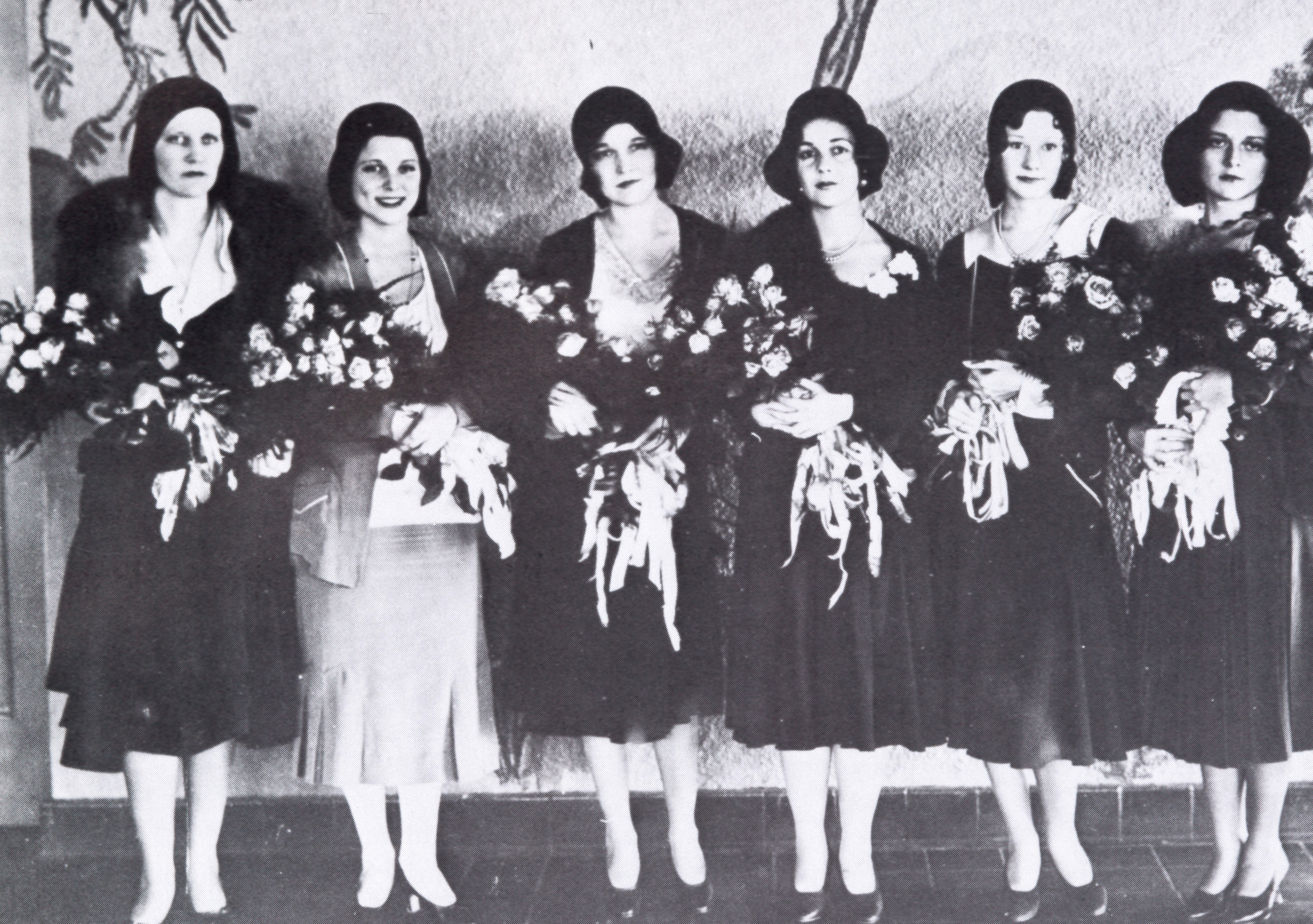THE JAZZ AGE COMES TO BEAUMONT
By Judith Linsley
The phenomenon of the 1920s, known as the Roaring Twenties or the Jazz Age, began in the big cities but ultimately came to smaller cities such as Beaumont. The Beaumont Enterprise and Beaumont Journal chronicled Beaumonters' response to these social changes.
Dramatic changes came to women's clothing early in the decade. Between 1910 and 1920, the hourglass figure gradually relaxed into a softer silhouette before disappearing entirely. Girdles and "confiners" replaced corsets. A 1924 Beaumont newspaper article made the alarming announcement that "hipless, slatlike women with waist-lines far below normal" would be in vogue that spring.
Females moved to ever shorter skirts and lower necklines. Bathing suits became sleeveless knit garments, worn with stockings that sometimes exposed the knees. Swimmers with shorter stockings risked incurring fines for indecent exposure. Beaumont passed an ordinance against women wearing knickers in public, but the police chief doubted it would last, stating resignedly, "What they wear in New York, they wear in Beaumont sooner or later."
For one witty woman, practicality trumped fashion: "For the work they do, I always thought women should wear trousers and the men wear skirts."
New fashions called for new faces and hair styles. Makeup, once forbidden to "nice" women, became big business in the consumer culture of the Twenties. Women "bobbed" their hair, sometimes shorter than the men's, curled it with one of the new permanent waves, and colored it to fit the youth-oriented culture. "Gray-haired, unattractive folks aren't wanted around," a 1920 Beaumont newspaper ad stated unequivocally.
The Jazz Age was perhaps most defined by the African American music genre that gave it its name. Its critics abounded. The Enterprise consigned jazz to the "basement" of the music house, and the Journal recommended, "If you want your old phonograph records brought up to the minute, let the baby work on them with a pin and give them the modern jazz effects." But jazz records were bestsellers, and jazz musicians drew sellout crowds.
Jazz inspired dances that were unrestrained, acrobatic, and even hazardous. The Journal cited possible health problems from the Charleston: water on the knee, heart strain, prolapsed kidneys, hernias, twisted ligaments and flat feet. But to the Charleston, dancers added the Shimme, the Scissors, the Varsity Drag and the Lindy Hop.
Moralists especially deplored young people's obsession with off-color jokes. Beaumont's South Park School District board strongly criticized "kissing" and "booze" jokes in the South Park High School newsletter, especially the "anatomical accidents:" "He kissed her passionately upon her reappearance." The Enterprise dutifully reprinted every questionable joke.
Movies pushed the envelope even further. The Enterprise and Journal published plot synopses, including endings, so that people could judge the suitability for themselves. Some movies were considered so risqué that men and women had to view them in separate showings.
Thus Beaumonters responded to an era of broad social change, with some opposed and others taking it in stride. As in other communities, the local newspapers provided invaluable in-the-moment documentation of events as no other medium could.

Judith Walker Linsley, "A Social History of Beaumont, Texas, in the 1920s" (unpub. Master's thesis, Lamar University, 1977), p. 8, 38, 39, 78, 111, 114, 155. Beaumont Enterprise, January 20, 28, 1924, May 5, June 4, 1925. Beaumont Journal, January 3, February 3, 1920, September 1, 1921, February 9, 1923, November 1, 1924, March 6, August 2, 1926, April 7, 1929